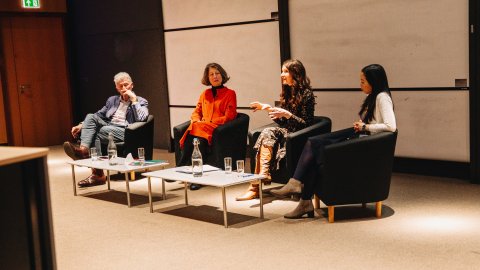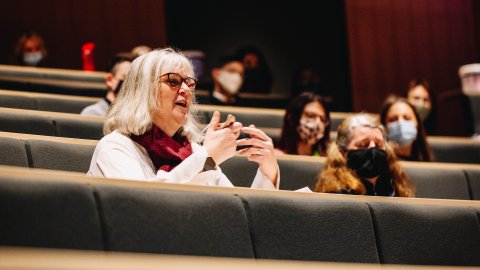The European Research Council today announced the winners of its 2021 Advanced Grants competition and Oxford Mathematician Stuart White was one of four awardees from the University of Oxford for his CSTAR project. Just 14% of applications for grants were successful this year - 253 researchers from across the sciences and humanities received awards out of more than 1,700 proposals. Only nine of those 253 were mathematicians.
Quantum hair and black hole information
Abstract
In this talk, I review some recent results obtained for black holes using
effective field theory methods applied to quantum gravity, in particular the
unique effective action. Black holes are complex thermodynamical objects
that not only have a temperature but also have a pressure. Furthermore, they
have quantum hair which provides a solution to the black hole information
paradox.
Repulsive Geometry
Keenan Crane is the Michael B. Donohue Associate Professor in the School of Computer Science at Carnegie Mellon University, and a member of the Center for Nonlinear Analysis in the Department of Mathematical Sciences. He is a Packard Fellow and recipient of the NSF CAREER Award, was a Google PhD Fellow in the Department of Computing and Mathematical Sciences at Caltech, and was an NSF Mathematical Postdoctoral Research Fellow at Columbia University. His work applies insights from differential geometry and computer science to develop fundamental algorithms for working with real-world geometric data. This work has been used in production at Fortune 500 companies, and featured in venues such as Communications of the ACM and Notices of the AMS, as well as in the popular press through outlets such as WIRED, Popular Mechanics, National Public Radio, and Scientific American.
Abstract
Numerous applications in geometric, visual, and scientific computing rely on the ability to nicely distribute points in space according to a repulsive potential. In contrast, there has been relatively little work on equidistribution of higher-dimensional geometry like curves and surfaces—which in many contexts must not pass through themselves or each other. This talk explores methods for optimization of curve and surface geometry while avoiding (self-)collision. The starting point is the tangent-point energy of Buck & Orloff, which penalizes pairs of points that are close in space but distant with respect to geodesic distance. We develop a discretization of this energy, and introduce a novel preconditioning scheme based on a fractional Sobolev inner product. We further accelerate this scheme via hierarchical approximation, and describe how to incorporate into a constrained optimization framework. Finally, we explore how this machinery can be applied to problems in mathematical visualization, geometric modeling, and geometry processing.





